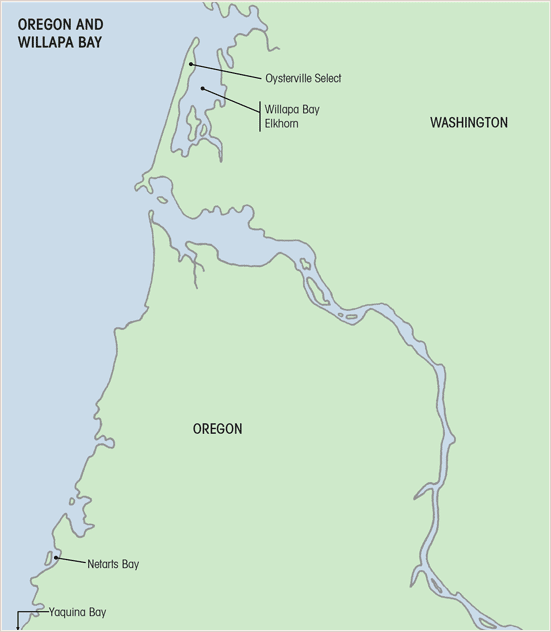Willapa Bay and Oregon
Willapa Bay was where it began, and where it almost ended. The Washington State oyster industry got its start back in 1850, when Willapa was known as Shoalwater Bay. The market was San Francisco forty-niners, and Willapa was the next great estuary up the coast from California, whose oysters were exhausted almost as soon as they were discovered. Willapa opened directly onto the Pacific, giving it much faster access to San Francisco than Puget Sound had, yet it was well protected by a barrier beach twenty miles long that left only a small exit to the ocean. What’s more, its shallow flats—a full half of the bay is exposed every low tide—made for the easiest oyster harvesting imaginable. Settlers quickly muscled out the local Native Americans and established a hugely lucrative industry.
By 1900 the native oyster was wiped out in Willapa—which is why it got officially named for Olympia, where it still existed. In the 1920s, the Pacific Oyster was introduced to the West Coast, where it has thrived ever since. Today, Willapa Bay and Gray’s Harbor, a smaller but similar bay to the north, continue to produce a lot of oysters, over 40 million pounds a year, almost 10 percent of the U.S. total. Virtually all of this has been for the shucked-meat market, but with that market in decline, some Willapa growers are changing to in-shell. Still, this is old-school, large-scale oystering, involving dumping cultch and either hand-picking or dredging the flats.

